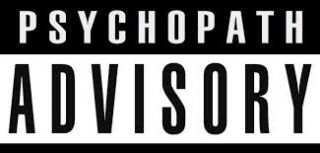Psychopathy
Inside the Mind of the Criminal Psychopath
Criminal psychopaths can be managed but not cured.
Posted June 15, 2015 Reviewed by Devon Frye

While the concept of psychopathy has been known for centuries, there has been considerable attention paid to it by researchers during the last couple of decades. In particular, Dr. Robert Hare, a prominent researcher in the field of criminal psychology, has led research efforts to develop a series of assessment tools to evaluate the personality traits and behaviors attributable to psychopaths.
Dr. Hare and his associates developed the Psychopathy Check List Revised (PCL-R) and its derivatives which provide a clinical assessment of the degree of psychopathy that an individual possesses (1).
Based on forty years of intensive empirical research, the PCL-R has been established as a powerful tool for the assessment of this serious and dangerous personality disorder. Specific scoring criteria rate twenty separate items on a three-point scale (0, 1, 2) to determine the extent to which they apply to a given individual.
The instruments developed by Dr. Hare and his colleagues attempt to measure a distinct cluster of personality traits and socially deviant behaviors, which fall into four factors: interpersonal, affective, lifestyle, and antisocial.
The interpersonal traits include glibness, superficial charm, grandiosity, pathological lying, and manipulation of others. The affective traits include a lack of remorse and/or guilt, shallow affect, lack of empathy, and failure to accept responsibility. The lifestyle behaviors include stimulation-seeking behavior, impulsivity, irresponsibility, parasitic orientation, and a lack of realistic life goals. Antisocial behaviors include poor behavioral controls, early childhood behavior problems, juvenile delinquency, revocation of conditional release, and committing a variety of crimes (2).
An individual who possesses all of the interpersonal, affective, lifestyle, and antisocial personality traits measured by PCL-R is considered a psychopath. A clinical designation of psychopathy in the PCL-R test is based on a lifetime pattern of psychopathic behavior. The results to date suggest that psychopathy is a continuum ranging from those who possess all of the traits and score highly on them to those who also have the traits but score lower on them (3).
The PCL-R allows for a maximum overall score of forty. A minimum score of thirty is required in order to designate someone as a psychopath. The scores for those who are psychopaths vary greatly, revealing that very high to low levels of the condition exist among those who have it. Non-criminal psychopaths generally score in the lower range (close to thirty) while criminal psychopaths, especially rapists and murderers, tend to score in the highest range (close to forty). No two psychopaths score exactly the same on the test. The average non-psychopath will score around five or six on the PCL-R test.
Dr. Hare and other experts, including forensic psychologists and FBI profilers, consider psychopathy to be the most important forensic concept of the early twenty-first century. Because of its relevance to law enforcement, corrections, the courts, and related fields, the need to understand psychopathy cannot be overstated.
This includes knowing how to identify psychopaths, the damage they can cause, and how to deal with them more effectively. For example, understanding the personality and behavioral traits of psychopaths allow authorities to design interviewing and interrogation strategies that are more likely to be effective when dealing with them.
Psychopaths’ manipulative nature and skill in the art of deception can make it difficult for law enforcement officers to obtain accurate information from them unless the interviewer has been trained in special techniques for questioning such individuals (4). Professionals who work in the criminal justice system must understand psychopathy and its implications because they will definitely encounter psychopaths in their work.
Approximately one-third of all prison inmates who are considered to be “antisocial personality disordered” meet the criteria of severe psychopathy specified in the fifth edition of the Diagnostic and Statistical Manual of Mental Disorders (DSM-5). For the very first time, the APA recognized psychopathy as a “specifier” of clinical antisocial personality disorder in the DSM-5, although psychopathy is still not an officially accepted clinical diagnosis (5).
The recognition of psychopathy as a specifier of clinical ASPD by the APA follows nearly fifty years of research and debate. It is significant because the DSM-5 serves as a universal authority for the diagnosis of psychiatric disorders. The DSM-5 was published on May 18, 2013, superseding the DSM-IV-TR, which was published in 2000.
One important question remains to be asked: Can psychopathy be cured? According to mental health experts, the short answer to this question is no. Dr. Nigel Blackwood, a leading forensic psychiatrist at King’s College London, has stated that adult psychopaths can be treated but not cured (6).
Blackwood explains that psychopaths do not fear the pain of punishment and they are not bothered by social stigmatization. Psychopaths are indifferent to the expectations of society and reject its condemnation of their criminal behavior. According to Blackwood and others, callous and unemotional psychopaths simply do not respond to punishment the way that normal people do. Consequently, adult psychopaths in prison are much harder to reform or rehabilitate than other criminals with milder or no antisocial personality disorders (7).
Because they do not respond in a normal fashion to punishment, reward-based treatment or management seems to work best with psychopaths. Such strategies have been used effectively with psychopaths in institutional settings.
In reward-based treatment, psychopathic prisoners are given small privileges such as watching television or other perks in exchange for good behavior. For example, reward-based treatment has been utilized effectively with convicted serial killer Dennis Rader (AKA Bind, Torture, Kill) at the El Dorado Correctional Facility in Kansas.
Rader, who I have corresponded with extensively through letters, has been a model prisoner since his incarceration in 2005. Although he remains in solitary confinement twenty-three hours per day, he has received increasing privileges, including foods he likes, in exchange for his good behavior. He has told me that he looks forward to his little rewards.
I believe that the obsessive personality of many psychopaths such as Rader makes a reward-based system particularly effective. Their behavior remains good or even improves as they become increasingly fixated on their rewards. Despite the practical utility of reward-based treatments, however, the fact remains that there is no known cure for psychopathy. In other words, it can be managed quite effectively but not cured.
I examine the fantasies and habits of notorious serial killers, including the “Son of Sam” and “Bind, Torture, Kill” based on my personal correspondence with both of them, in my best-selling book Why We Love Serial Killers: The Curious Appeal of the World’s Most Savage Murderers.
Follow the author @DocBonn on Twitter and visit his website docbonn.com
References
(1) Hare, R. D. and Neumann, C. S. 2008. “Psychopathy as a clinical and empirical construct.” Annual Review of Clinical Psychology, 4, pp. 217-246.
(2) Ibid.
(3) Ibid.
(4) Babiak, P., et al. 2012. “Psychopathy: An important forensic concept for the 21st century.” FBI Law Enforcement Bulletin, July.
(5) American Psychiatric Association. 2013. Diagnostic and Statistical Manual of Mental Disorders, 5thEdition (DSM-5). Arlington, VA: American Psychiatric Publishing.
(6) Rogers T, Blackwood N, Farnham F, Pickup G, Watts M. 2008. “Fitness to plead and competence to stand trial: A systematic review of the construct and its application.” Journal of Forensic Psychiatry and Psychology, 19, pp. 576-596.
(7) Ibid.




